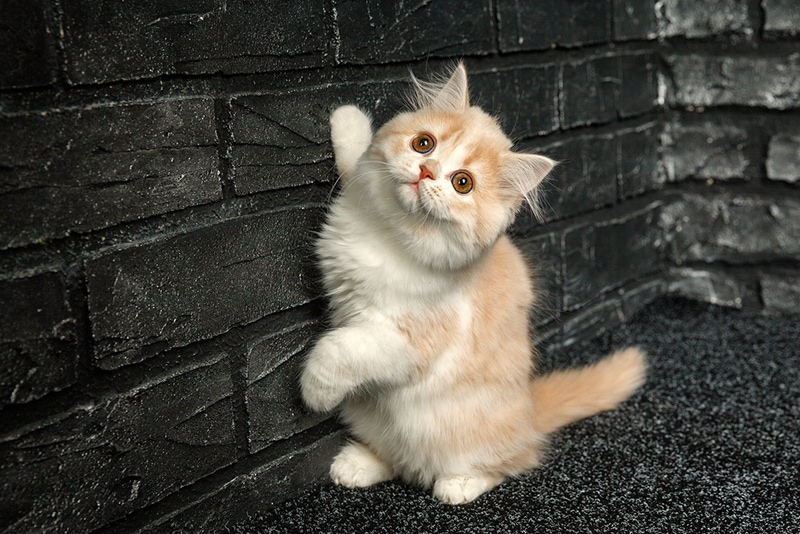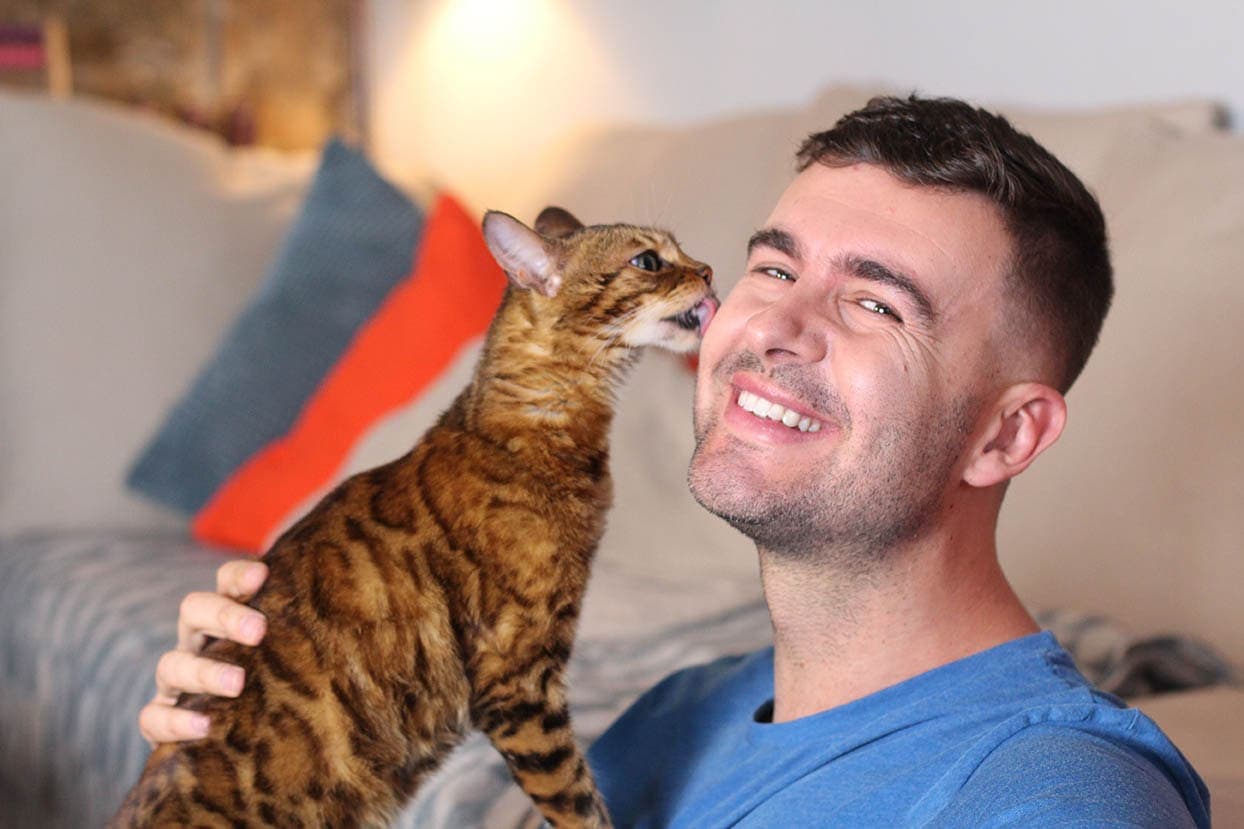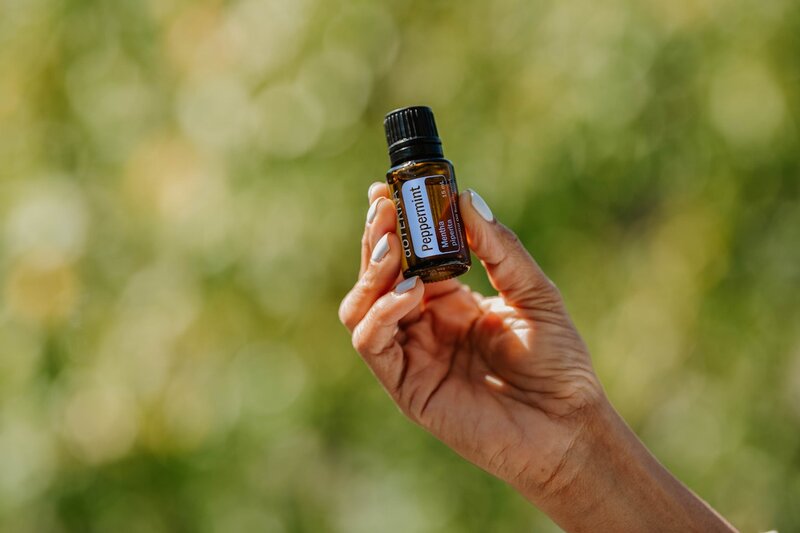How Big Do Bengal Cats Get? Vet Reviewed Average Weight & Growth Chart
By Brooke Bundy
Updated on
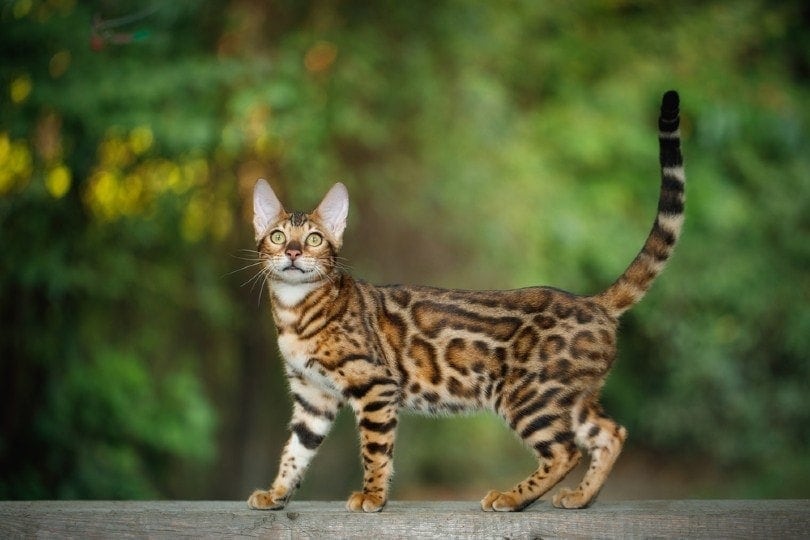
Click to Skip Ahead
Bengal cats have captivated many people due to their leopard-like appearance and somewhat wild temperament. If you’re interested in adopting a Bengal cat, you may be wondering just how big you can expect them to get, so you can make sure that you have the space for them. Luckily, Bengal cats don’t get nearly as big as leopards, and they are only slightly larger than most domestic house cats. You can expect a Bengal to reach between 10 and 15 pounds when they’re fully grown. Let’s learn more about how big Bengal cats get in this article.
Bengal Cat Breed Overview
The Bengal cat’s exotic spots make them look more like a wild cat than the average domesticated feline—and for good reason. During the 1960s, a cat breeder intentionally bred an unknown domestic cat to the Asian Leopard Cat, a real wild cat. The Bengal remains a relatively new breed, but no worries: today, they are considered fully domesticated. Unlike true wild cats, Bengal cats are legal to own in most parts of the United States and are about the closest you can get to having a pet leopard.
While you can legally adopt a Bengal cat in most places, be sure to check with your local government first. Some people are a little skeptical of the Bengal’s close ancestry to the Asian Leopard Cat and may restrict the ownership of this breed as a pet. For example, Connecticut, Iowa, and Georgia have their own set of requirements for those wanting a pet Bengal cat.
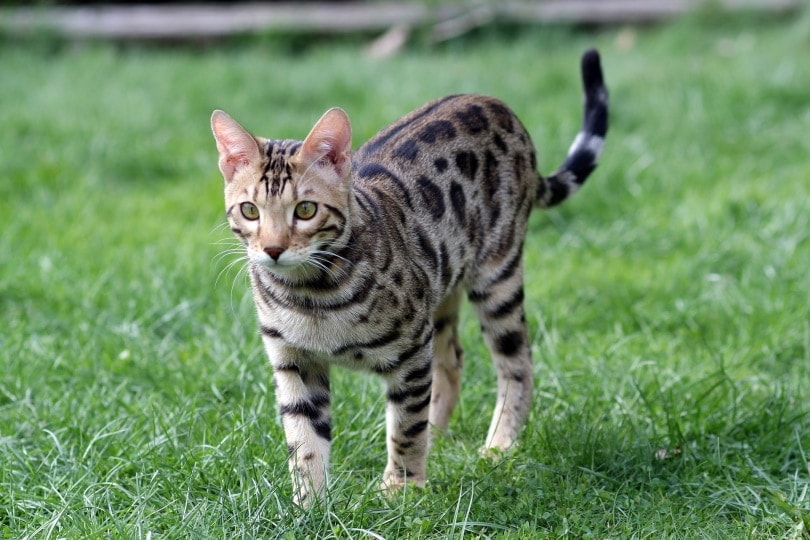
Bengal Cat Size and Growth Chart
As a medium-sized cat, the Bengal is usually expected to weigh between 10 and 15 pounds when fully grown. Cats mature at different rates, but most will hit puberty between 4 and 6 months and reach their approximate height and weight by the time they’re 1 year old. Their growth slows down after their first birthday, but they often continue filling out until they’re 2 years old, which is when they’re considered to be grown adults.
Here’s a breakdown of approximately how big you can expect your Bengal cat to be according to age:
| Age | Weight Range |
| 8 weeks | 2–4 pounds |
| 3 months | 3–5 pounds |
| 6 months | 4–8 pounds |
| 9 months | 8–13 pounds |
| 1 year | 10–15 pounds |
| 2 years | 10–15 pounds |
When Does a Bengal Cat Stop Growing?
Cats grow rapidly as kittens, and their rate of growth slows down as they get older. Between 4 and 6 months old, you’ll notice that your tiny kitten suddenly seems to be acting like a miniature adult. This is around the time they become sexually active if they haven’t been spayed or neutered.
Growth slows down a lot at around 8 months. At around 1 year, they will be very close to their final size, but they will continue to develop until they’re around 2 years old. After their second birthday, they should be completely finished growing. If they continue putting on weight after that, you might want to talk to your vet about weight management tips to make sure your cat is eating a healthy and correctly portioned diet.
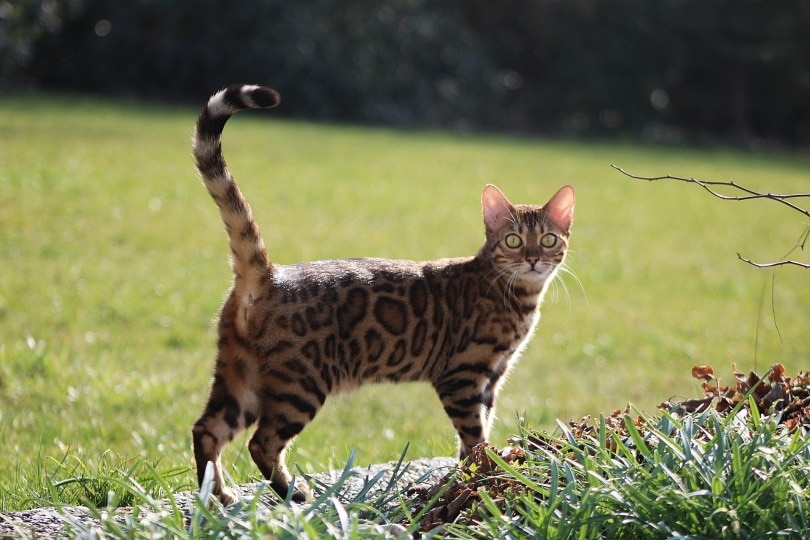
Factors Affecting the Size of Bengal Cat
Even though the Bengal is considered a standalone cat breed, it’s still a little bit of a stretch to call them completely “purebred.” The truth is, we really don’t know what type of domesticated cat started the breed or how many other cats may have been added to the mix since the 1960s. This genetic mystery puts an added challenge on estimating how big a Bengal will get.
In general, they are considered medium-sized cats, but crossbreed parentage—say, a Bengal mixed with a Persian—will produce different results. A rescued Bengal cat likely has unknown parentage which can definitely affect their final size.
Some cats may be bigger or smaller depending on environmental factors, such as diet, exercise, and whether or not they were the runt of the litter. A runt is often born smaller, but unfortunately, they stay petite because their bigger and stronger littermates are able to push them out of the way in order to scarf up more mother’s milk.
Ideal Diet for Maintaining a Healthy Weight
Finding a cat food that meets AAFCO standards can be pivotal for providing your cat with all that they need. There’s a lot of cat food on the market, but not every recipe is good for them, no matter what the advertisement says. Talk to your vet about finding a recipe that’s appropriate for your special kitty’s individual health needs and life stage. For example, if they’re too young to be spayed or neutered, they’ll need to be on a food that’s formulated for kittens. The only exception would be if their food is formulated to meet the nutritional needs for all life stages.
In a similar way, a senior cat may benefit from being on a senior formula that is designed to maintain body condition in older cats.
In some cases, older cats may have a harder time absorbing the nutrients from their food, which will result in an increase of food. However, don’t just put weight loss down to “old age” as there are many underlying diseases that cause weight loss such as hyperthyroidism, kidney disease, diabetes and gastrointestinal disease. Many of these diseases are treatable and as such changing foods or portions should only be done at your vet’s discretion.
It’s important to feed your cat the appropriate amount of food for their age and activity level every day. While the directions on the side of the can or bag can provide some guidance, look at your cat’s body condition. If they are over ideal weight, you will need to cut back their diet. Your vet is the best source for determining the most accurate portion for your kitty’s unique needs.
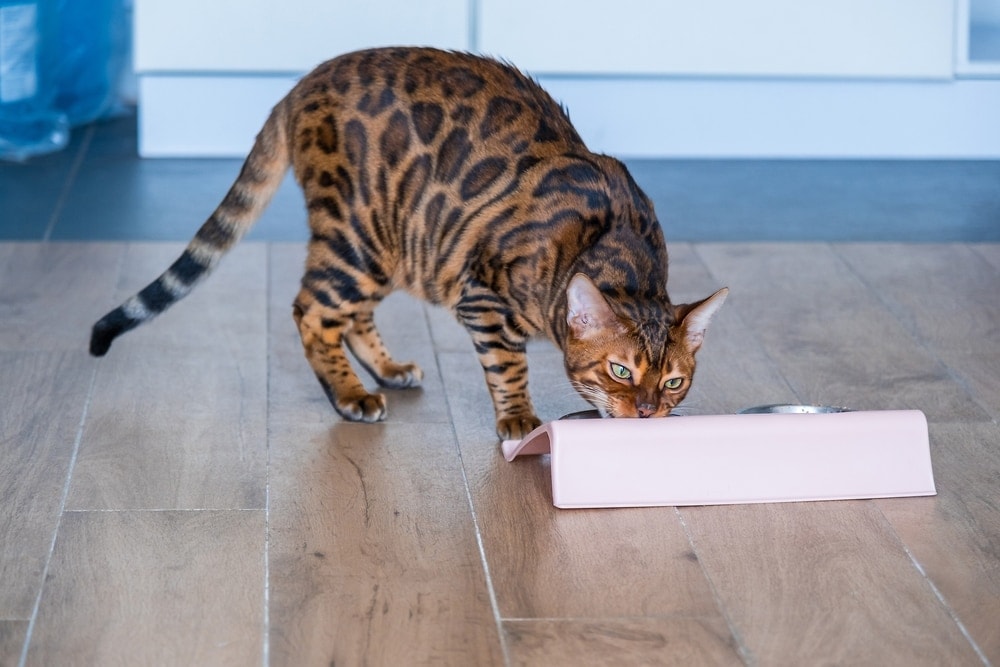
How to Measure Your Bengal Cat
Being able to measure your Bengal cat’s weight is important for making sure that they are growing correctly, so that you can discuss with your vet if your cat isn’t growing as they should.
If your cat will let you hold them, measuring your Bengal’s weight is easy. Just weigh yourself on a scale, then weigh yourself again, holding your cat. Take the weight holding your cat and subtract just your weight from it to find out how much your cat weighs. Alternatively, you can weigh your cat’s empty carrier and then weigh your cat inside the carrier to find out how much your cat weighs.
Final Thoughts
Unlike their wild counterparts, Bengal cats stay at a modest size, only reaching 10–15 pounds. Their thirst for adventure (including aquatic fun) makes them fun members of the family, especially for children. However, they won’t be the perfect choice for everyone.
The Bengal cat requires a lot of attention to keep from becoming destructive. Plus, modern skepticism over wild cats has resulted in laws limiting pet ownership of the Bengal cat in some parts of the country. Before signing any adoption papers, you should thoroughly research any legal or practical ownership requirements to make sure the Bengal is right for you.
Featured Image Credit: Seregraff, Shutterstock


